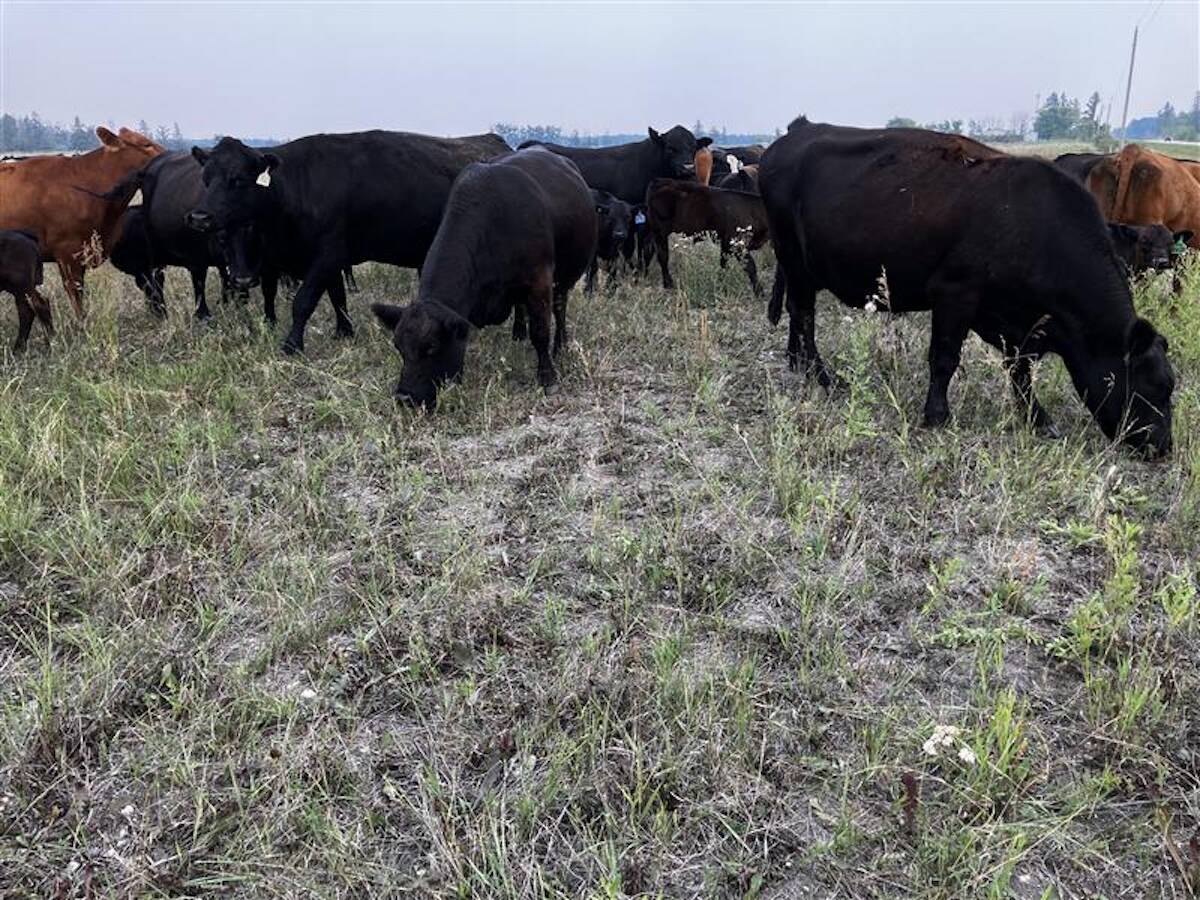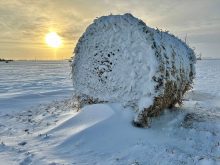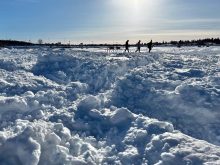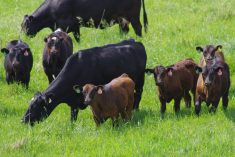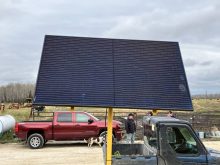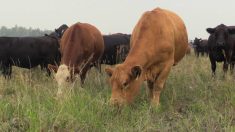A livestock producer’s forage, pasture and dugout situation in 2025 likely has a lot to do with which side of Manitoba’s precipitation line their farm falls.
It’s been a tale of two drought years in Manitoba this season. No part of the province is wet. As of a July 27 provincial crop weather report, only three sites (Deloraine, Sinclair and Minto —all patches of southwestern Manitoba) had received average moisture for the year, although several more sites had crept over 90 per cent of normal.
Farmers in the east, Parkland and Interlake, however, have particularly poor weather stories this year. Parts of those regions were almost overwhelmingly half of normal rainfall or below as of July 27. The province reported as low as 26 per cent of normal seasonal rain near Fisher Branch in the Interlake. The wettest area of that region (Petersfield) had clocked only 56 per cent of normal precipitation.
Read Also

Manitoba Ag Days 2026 coming up fast
Canada’s largest indoor farm show, Manitoba Ag Days, returns to Brandon’s Keystone Centre Jan. 20-22, 2026. Here’s what to expect this year.
“We’ve been missing a lot of the rains,” said Interlake farmer Shannon Pyziak. “The largest amount of total rainfall in this area seems to be around two-and-a-half inches total since spring. So, production for hay is really poor. We have a lot of livestock producers concerned.
“Livestock producers are hauling water because dugouts are dry.”
WHY IT MATTERS: Cattle producers in Manitoba’s Parkland and Interlake are facing down yet another dry year of poor forage stands and low dugout worries. Recent drought years have sparked aid programs, forage insurance overhauls and caused Manitoba’s beef herd to dwindle.
Rain has tracked a diagonal line through the province this year. Weather maps from Agriculture and Agri-Food Canada note a wedge of wetter conditions extending west to east through the province, a trend that intensified through July.

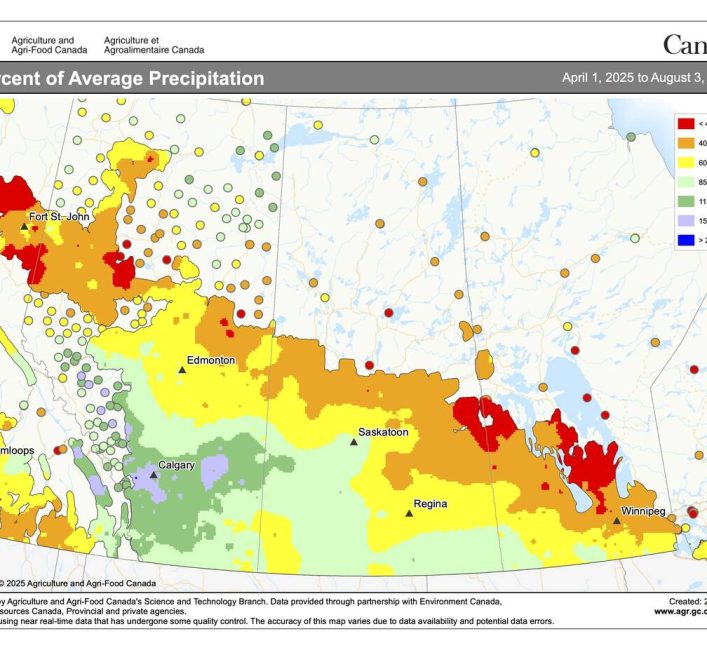
Melissa Atchison, research and extension specialist with Manitoba Beef Producers, noted how inconsistent rainfall patterns have contributed to producers’ drought problems this year.
“The rains have been so spotty. We have areas of the province that are in good shape and others, particularly the Interlake and Eastern parts of the province that are at extreme moisture deficits,” she said.
Parts of central Manitoba have been comparatively fortunate. The province noted stations at Windygates, Somerset and Elm Creek all topping 90 per cent of their normal precipitation since May 1. At the same time though, the station in Portage la Prairie, also in central Manitoba, clocked in at only 37 per cent.
Feed and water challenges
Soil type and management practices are also factors, since lighter soils lose moisture more quickly in times of low rainfall and high heat. In certain areas of the province where there’s been a profound lack of moisture, some producers could start implementing drought management tactics like supplementation, early weaning, creep feeding, and even herd downsizing in severe cases, Atchison said.

On July 23, the province and federal government announced support measures for Manitoba livestock producers affected by drought conditions, including faster insurance payouts and the ability to defer loan payments.
The Manitoba Agricultural Services Corporation (MASC) will provide support through its AgriInsurance program to improve cash flow for producers needing additional feed, federal agriculture minister Heath MacDonald and Manitoba Agriculture Minister Ron Kostyshyn said in an announcement.
MASC will apply a quality adjustment factor to reduce AgriInsurance yield appraisals by 40 per cent for drought-stricken cereal crops converted to livestock feed. The adjustment extends to key cereal crops such as wheat, oats, barley, fall rye, triticale and grain corn. A similar measure was last implemented in 2021, leading to more than 100,000 acres of grain crops being redirected for use as livestock feed.
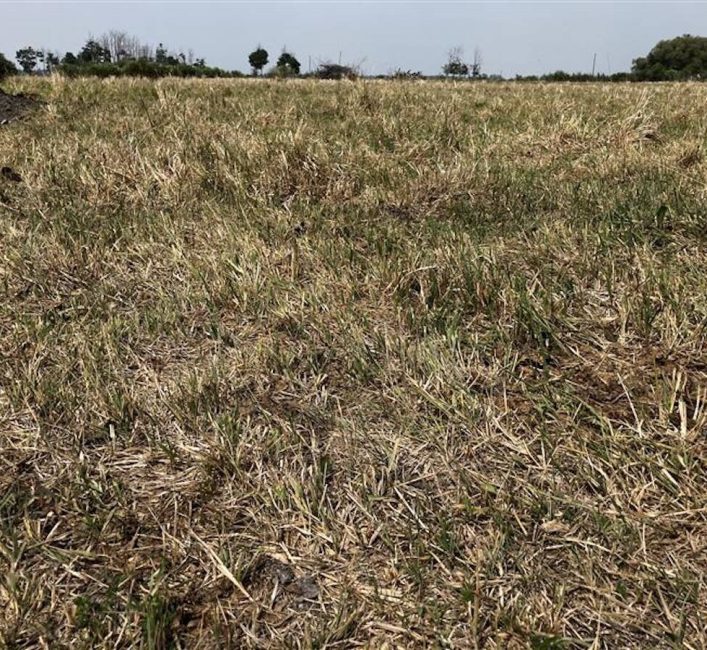
Additionally, MASC will provide lending clients with the opportunity to defer loan payments and assist them in arranging financing for feed purchases, if required.
“Our livestock producers play a critical role in our food supply and our economy. We need to do everything we can to support them, especially in the face of these dry conditions,” MacDonald said. “These program changes will ensure producers in Manitoba receive claim payouts faster, so they can source other feed options as quickly as possible.”
Additional flexibility
Producers with forage and pasture insurance will also benefit from several changes. These include the option to defer premium payments on claims filed before Oct. 1, the possibility of receiving partial payments when available, and permission to allow livestock to graze insured forage after the first cut without incurring penalties.
“We recognize that some of Manitoba’s livestock producers are facing challenging conditions with the lack of precipitation in certain regions of the province,” Kostyshyn said.
“With pastures drying up and minimal sources of feed for livestock, it is important to give producers the resources they need to maintain their herds.”
Looking ahead
Despite the struggles in some areas, there is some optimism about feed availability, Atchison said.
“Given that many producers have carryover feed supplies and there are areas that have adequate moisture, prices may be a bit inflated regionally, but we don’t anticipate a massive price increase like 2021, where there was essentially no feed available in Western Canada.”


